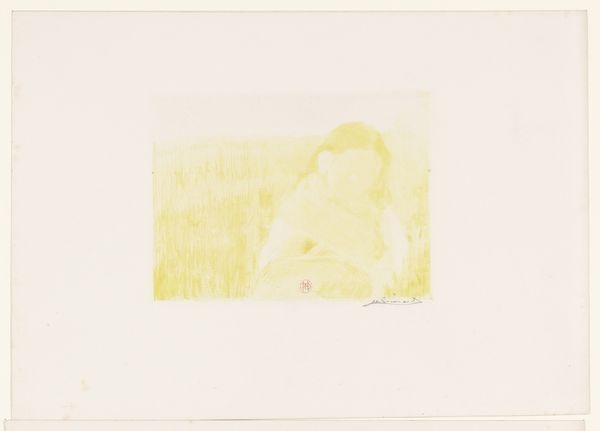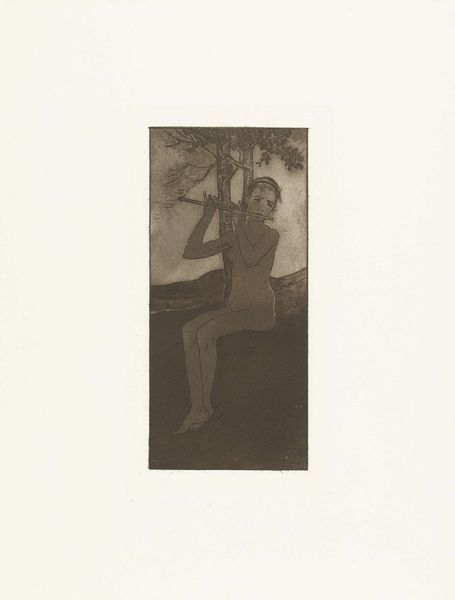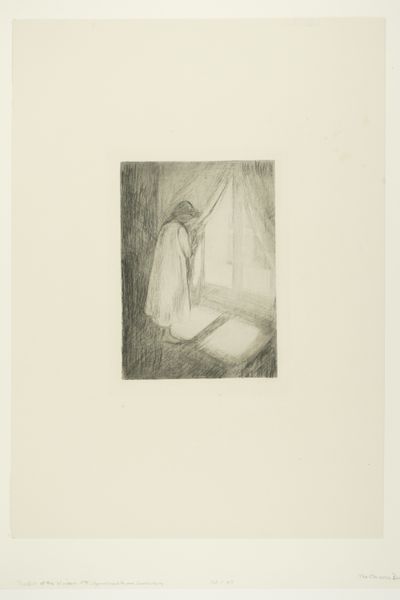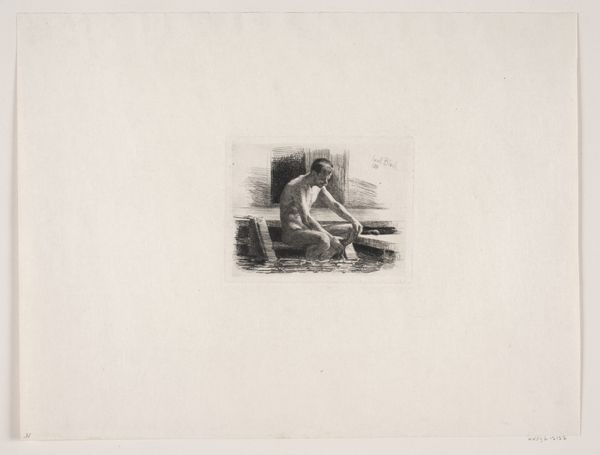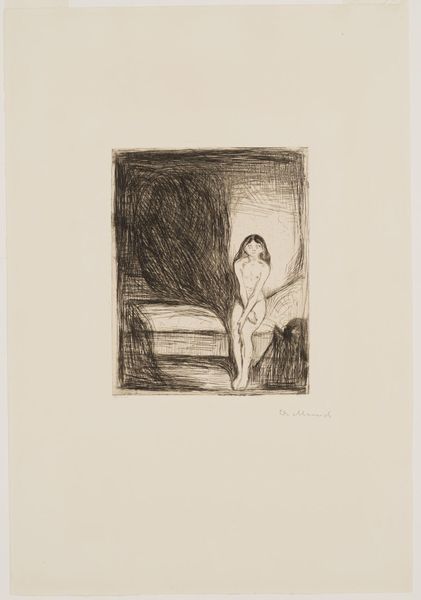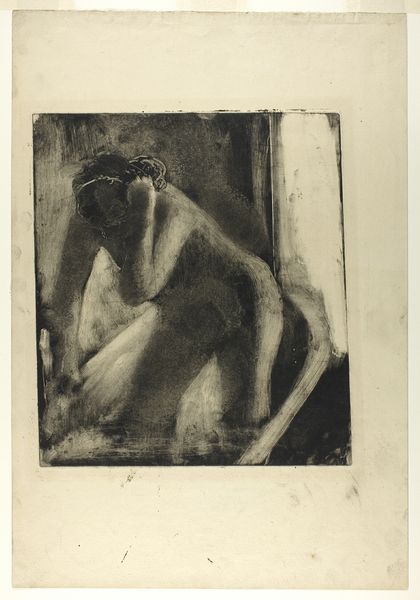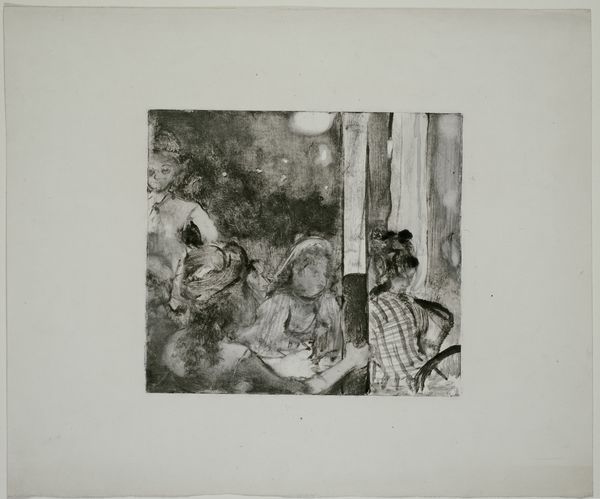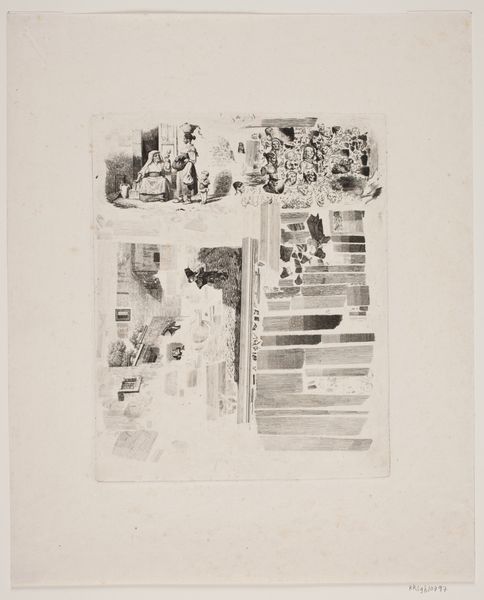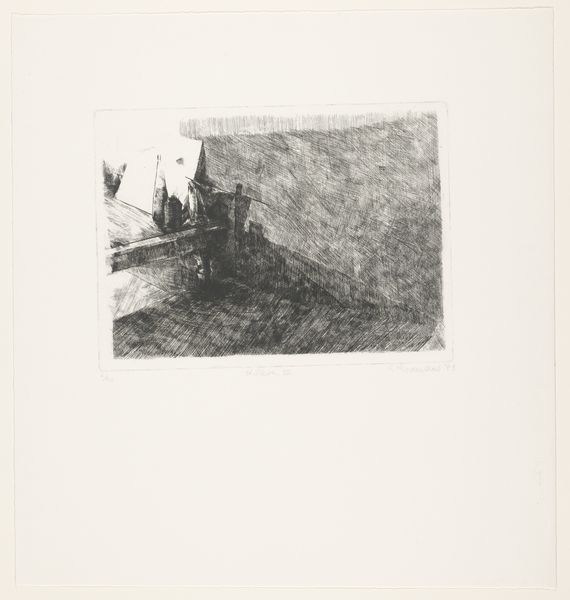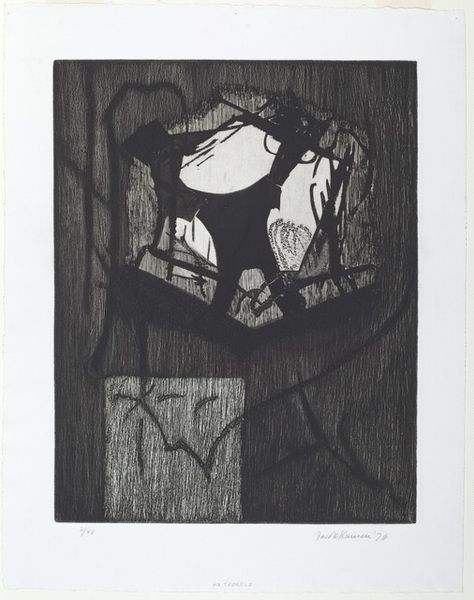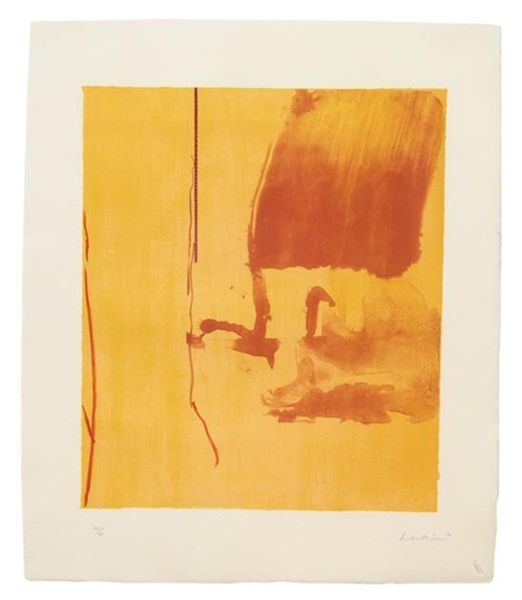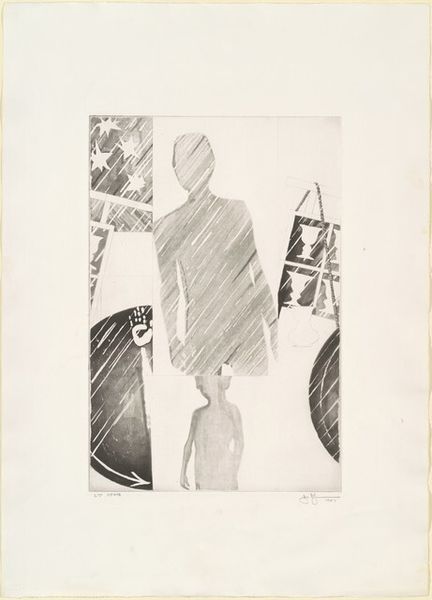
drawing, print, etching, paper
#
portrait
#
drawing
# print
#
etching
#
landscape
#
paper
#
symbolism
Dimensions: 244 × 317 mm (image); 249 × 324 mm (plate); 449 × 628 mm (sheet)
Copyright: Public Domain
Editor: We’re looking at Edvard Munch’s "Summernight. The Voice," created in 1894. It's an etching printed on paper and strikes me as incredibly haunting. What do you see in this piece? Curator: Immediately, I’m drawn to the verticality of the trees, they're like silent witnesses to a whispered secret. Notice how the woman's dress blends into the pale light of the night. Munch is not just showing us a scene; he’s inviting us into a psychological landscape. Does the figure's expression give you any clues? Editor: Her gaze seems both direct and distant, which is odd. There’s a sense of isolation, even within this natural setting. I'm especially intrigued by what could be the “voice.” What do you think Munch is trying to say through the title? Curator: Think about the role of the “voice” throughout history and myth—divine pronouncements, internal monologues, a call to action. Here, the voice is ambiguous, perhaps unheard by us, yet deeply affecting the figure. The etching medium, with its delicate lines, conveys this sense of fragility, almost as if the experience itself is ephemeral. Can you see how it adds to the feeling of disquiet? Editor: Absolutely. It’s as if the whole scene could vanish at any moment, with just the lightest breeze. Looking at how Munch frames her in nature makes me wonder about our own voices within the chaos of the world. Thank you for the insights. Curator: And thank you. The image becomes richer when we share the experience. It reminds us that even whispers can hold profound power.
Comments
No comments
Be the first to comment and join the conversation on the ultimate creative platform.


